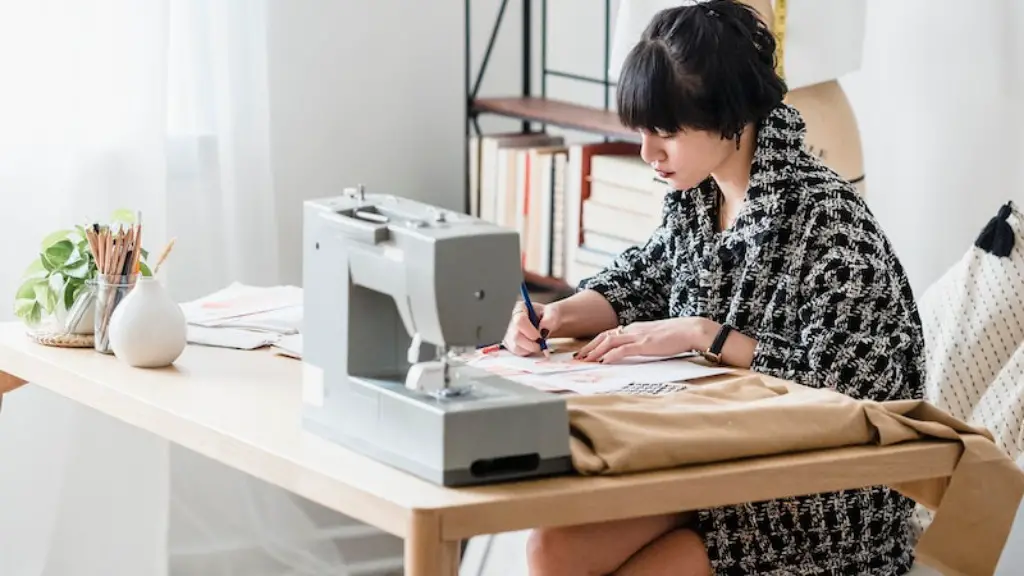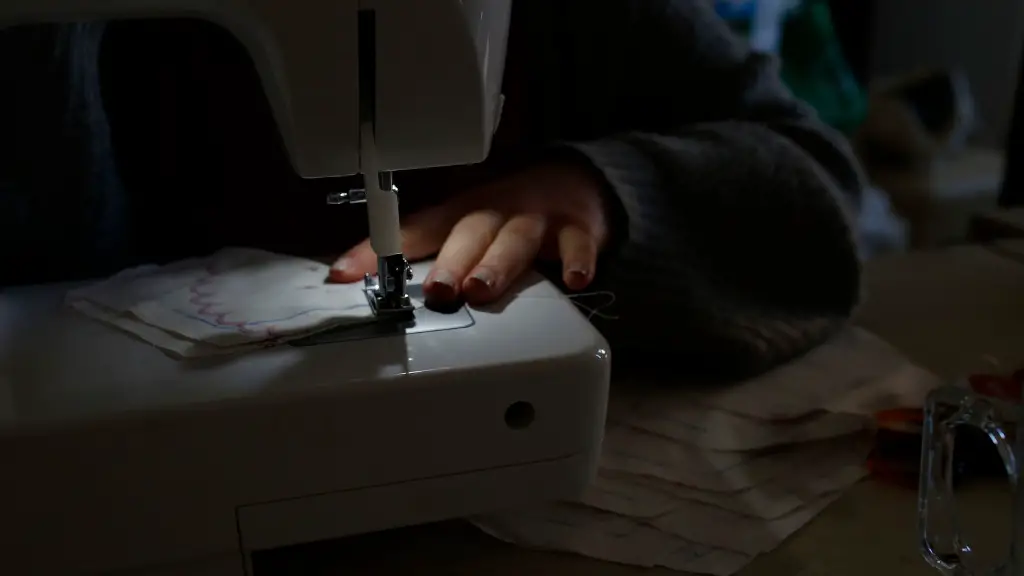Sewing machine needles come in various sizes which can be used for a range of textiles and projects. Choosing the correct needle size is an important part of setting up a sewing machine and can make the difference between success and failure when starting any sewing project. But what is a needle size and how do you choose the correct one for each job? In this article, we will explore the different types of needle sizes, explain how to choose the right needle for each project and provide useful tips for sewing with a sewing machine.
Different Needle Types and Sizes
The most common types of needles used in sewing machines are the Universal needle, Denim/Jeans needle, Stretch needle and the Sharps needle. Although these are the most popular types of needles, there are many others available such as Ball Point needles and Quilting needles. Universal needles are the most common type and will generally work well with any general purpose fabric.
When it comes to needle size, the most important factor is the needle’s diameter. Needle sizes can range from 8 (the smallest) to 16 (the largest). They are measured in metric sizes and the higher the number, the thicker the needle. As a general rule, silk, chiffon and other lightweight fabrics require a smaller needle than fabrics like denim and canvas which require a thicker needle.
Choosing the Right Needle
When selecting the correct needle, it’s important to consider the type of fabric you’re working with as well as the type of stitch you’re planning to use. For example, if you’re sewing a seam or top-stitching with a regular straight stitch, a Universal needle size 11 or 12 should work fine. If you are working with a lightweight, delicate fabric such as chiffon, then a size 8 or 9 needle might be a better option.
It’s also important to remember that when sewing with a sewing machine, the needle should be a slightly larger size than the thread you are using. For example, if you are using size 50 thread, a size 11 needle should be sufficient. This will ensure that the thread passes through the needle easily and prevents any snagging or thread breakage.
Tips for Sewing With a Sewing Machine
In addition to selecting the right needle size, there are a few other tips to keep in mind when sewing with a sewing machine. Firstly, make sure the machine is threaded and tensioned correctly. This will help ensure that the stitch pattern is even and that the stitches don’t pull or pucker the fabric. Secondly, make sure the needle is inserted and secured properly in the machine. If the needle isn’t securely in place, it can lead to irregular stitching or even machine damage.
Lastly, be sure to use the correct needle for the fabric and thread you’re using. Sewing with the wrong needle size can cause skipped stitches, thread breaking and fabric puckering. Different fabrics and thread weights require different needle sizes and it’s important to select the correct needle for each project in order to ensure the best quality stitches possible.
The Benefits of Using the Correct Needle Size
Using the correct needle size is essential when sewing with a sewing machine. Not only will it help to ensure an even stitch pattern, it will also help reduce the chances of skipped stitches, fabric puckering, stitch jamming and thread breaking. In addition, using the wrong needle size can cause damage to the needle plate or fabric as well as create an uneven stitch pattern.
Using the right needle size will also help to ensure that the stitches are strong and durable. The thicker the needle, the bigger the hole made in the fabric and the stronger the stitch will be. This is particularly important if you’re working on a project that requires tough materials, like canvas or denim.
Caring for Your Needles
Once you’ve selected the correct needle for your project, it’s important to take care of it. Needles should be inspected regularly for signs of wear and replaced if necessary. It’s also important to store needles in a dry place to prevent rusting.
It’s also a good idea to use a needle threader when threading needles. This helps to ensure that the thread is correctly threaded through the needle and reduces the chances of thread breakage or snagging.
Get the Right Tools for the Job
It’s important to have the right tools for the job when using a sewing machine. In addition to the correct needle size, you’ll also need a good quality fabric scissors, seam ripper and pins. These tools will help to ensure that your sewing project is a success.
It’s also a good idea to get a good quality sewing machine as this will help ensure that the stitches are even and that the fabric is handled gently. Investing in a good quality machine is a great way to ensure that your sewing projects turn out professional looking each and every time.
Correct Thread Tension Matters
The thread tension of your sewing machine is another important factor when it comes to producing quality stitches. The tension should be adjusted to suit the weight and type of fabric being used. If the tension is too loose, the seam will be uneven and the stitches will be too loose. On the other hand, if the tension is too tight, the fabric is likely to be puckered and the stitches will be too tight.
In order to adjust the thread tension, it’s important to refer to your sewing machine manual as different machines have different methods for adjusting tension. It can also be helpful to adjust the tension according to the fabric and thread you’re using.
Practice Makes Perfect
As with any skill, practice is the key to success when it comes to using a sewing machine. Starting out with small, simple projects is a great way to practice your sewing and get the hang of using a sewing machine. It’s also a good idea to experiment with different fabrics and needle sizes so you can get familiar with how each behaves and reacts when you’re working with them.
Once you’ve mastered the basics, you can move on to more difficult projects such as making clothing or upholstering furniture. With a bit of practice and patience, you’ll soon be a sewing expert and be able to tackle any project you set your mind to.
Conclusion
Sewing machine needles come in a variety of sizes and the correct size should be chosen for each project. It’s important to remember that the choice of needle size is dependent on both the type of fabric and thread being used. Choosing the correct size needle will help to ensure that stitches are even and that the project turns out looking neat and professional. With a bit of practice and patience, anyone can become a sewing expert.




